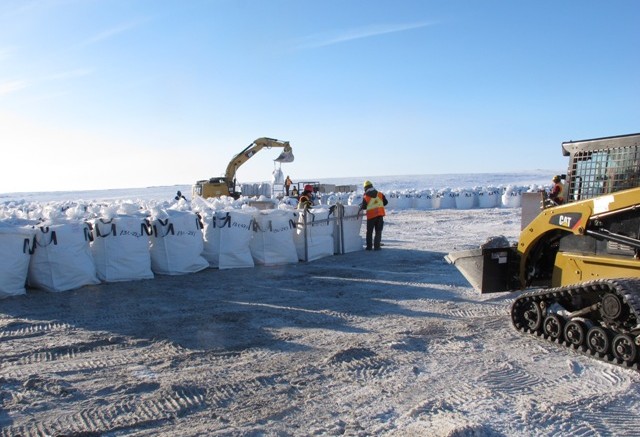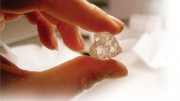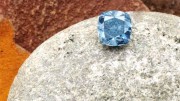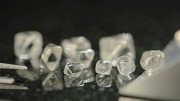Peregrine Diamonds (PGD-T) announced in October that diamond giant De Beers has decided not to exercise an option to earn 50.1% of the Chidliak diamond project, in Nunavut.
De Beers has already spent $5 million in exchange for the exclusive option, which it acquired last September, plus $2 million on a work program at Chidliak this summer. The option would have seen it invest $58.5 million in Chidliak.
No details about De Beers’ decision were released, but in a press release, Peregrine CEO Eric Friedland referenced the difficult market environment.
“Chidliak has benefited greatly from De Beers’ involvement over the last year and we are cognizant of their reasons not to proceed given the challenging mining market our industry is currently experiencing,” he said.
Peregrine lost its initial 51% partner at Chidliak, BHP Billiton (BHP-N, BLT-L), when the major decided to exit the diamond business in late 2011.
But all is not necessarily lost for Peregrine.
As a hedge in case De Beers decided not to proceed with the project, the junior funded and conducted a bulk sample of the CH-6 kimberlite this summer that will give it crucial information about the pipe’s grade and quality of diamonds. The 508-tonne sample, which is currently being processed, will give it a large enough parcel of diamonds to assess diamond value and calculate an initial resource for CH-6.
In 2010, a 14.11-tonne sample of drill core from CH-6 returned a grade of 2.84 carats per tonne.
Peregrine expects to have results from the bulk sample, including independent diamond valuations, in January.
The first half of the sample has been processed by dense media separation at De Beers’ facility in Sudbury, Ont., with the resulting heavy mineral concentrate being processed for diamond recovery at the Saskatchewan Research Council (SRC). De Beers is covering the entire cost of processing for the first half of the sample. At presstime, the second half of the sample was going through DMS processing in Sudbury, which Peregrine will pay for.
Peregrine also has new information about Chidliak garnered from De Beers’ $2-million, eight-week summer work program at Chidliak, as well as other technical work and conceptual mining data generated by the De Beers.
One nugget from De Beers program, which included the generation of new targets, ground geophysics, geologic mapping and prospecting, is that many of the kimberlites it’s surveyed at Chidliak have a strong gravity response. Peregrine notes that no gravity surveys have been conducted at Chidliak until this year, and that it expects gravity could play a key role in future discoveries at the project.
De Beers uncovered two new kimberlites this year, while a separate survey by the Canada Nunavut Geoscience Office turned up a new kimberlite dyke. Chidliak now hosts a total of 64 kimberlites.
In late October, Peregrine stock traded at 42¢ in a 52-week trading range of 29.5-83¢, with 139.2 million shares outstanding.
As of Aug. 13, Peregrine had $6.7 million in working capital and $9.7 million in cash. It has budgeted $2.7 million in spending for the remainder of the year.





Be the first to comment on "De Beers walks away from Peregrine’s Chidliak"